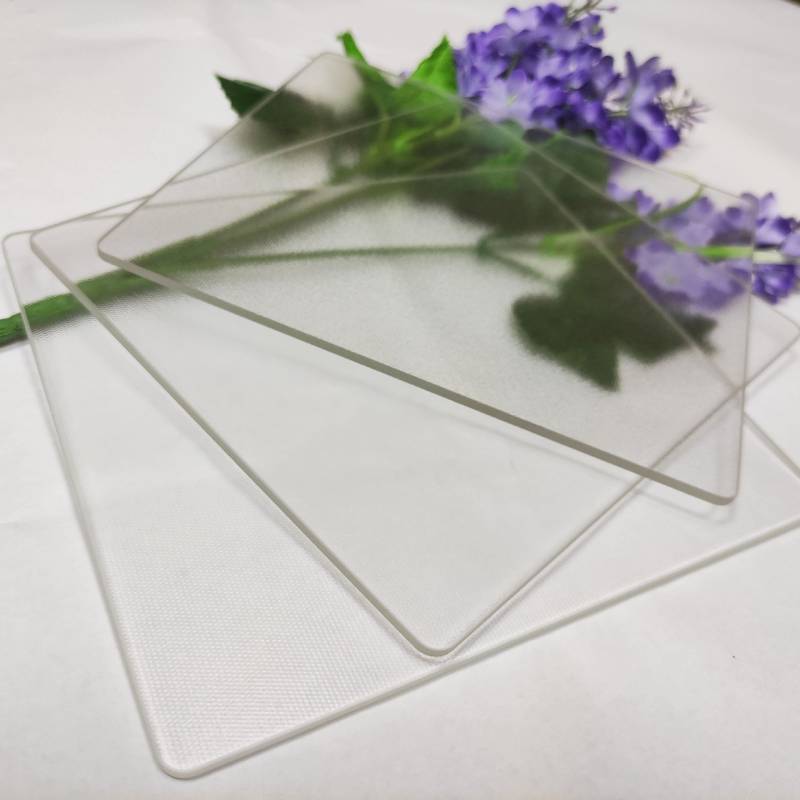The Art and Science of Float Glass Mirrors
Float glass mirrors are a beautiful intersection of art and science, showcasing clarity, precision, and elegance in their form and function. Widely used in both residential and commercial settings, these mirrors serve a variety of purposes, from interior design elements to functional items that enhance everyday life.
The term float glass refers to a specific manufacturing process that creates an exceptionally smooth and flat surface. Developed in the mid-20th century, the float glass process involves floating molten glass on a bed of molten tin. This technique allows the glass to attain a uniform thickness and an impeccable surface quality, making it ideal for mirroring. The result is a sheet of glass that is not only durable but also provides a clear, distortion-free reflection, which is essential for mirrors.
One of the key advantages of float glass mirrors is their versatility. They can be custom-made to fit any size and shape, enabling designers to create unique focal points in a room. Whether it’s a sleek, full-length mirror in a stylish hallway or a mosaic of smaller mirrors in a bathroom, float glass mirrors can complement various architectural styles and color palettes. The reflective quality of these mirrors also plays a crucial role in enhancing a space, making it appear larger and brighter by reflecting both natural and artificial light.
float glass mirror
Moreover, float glass mirrors are treated to create a reflective surface. A thin layer of silver or aluminum is applied to the back of the glass, followed by protective coatings to prevent oxidation and maintain durability. This combination not only enhances the reflectivity but also ensures longevity, making float glass mirrors a practical choice for high-traffic areas.
In addition to their aesthetic appeal, float glass mirrors also carry significant cultural and historical value. Throughout history, mirrors have been symbols of beauty and self-perception. From the ornate mirrors of the Baroque period to the minimalist designs popular today, mirrors reflect social norms and aesthetics of their time. Float glass, with its high-quality finish, has become a standard in both modern art and functional design, allowing artists and manufacturers to explore innovative ideas and applications.
As technology continues to evolve, the future of float glass mirrors looks promising. With advances in anti-fogging and smart mirror technologies, such as embedded displays and touchscreen capabilities, these mirrors are becoming more than just reflective surfaces. They are evolving into multifunctional devices that cater to the needs of the modern consumer, merging form and function seamlessly.
In conclusion, float glass mirrors exemplify the perfect blend of beauty, craftsmanship, and practicality. Their ability to distort reality and enhance the perception of space makes them invaluable in both everyday life and artistic endeavors. As we look towards the future, float glass mirrors will undoubtedly continue to play a vital role in design and technology, inspiring creativity and innovation for generations to come.
 Afrikaans
Afrikaans  Albanian
Albanian  Amharic
Amharic  Arabic
Arabic  Armenian
Armenian  Azerbaijani
Azerbaijani  Basque
Basque  Belarusian
Belarusian  Bengali
Bengali  Bosnian
Bosnian  Bulgarian
Bulgarian  Catalan
Catalan  Cebuano
Cebuano  Corsican
Corsican  Croatian
Croatian  Czech
Czech  Danish
Danish  Dutch
Dutch  English
English  Esperanto
Esperanto  Estonian
Estonian  Finnish
Finnish  French
French  Frisian
Frisian  Galician
Galician  Georgian
Georgian  German
German  Greek
Greek  Gujarati
Gujarati  Haitian Creole
Haitian Creole  hausa
hausa  hawaiian
hawaiian  Hebrew
Hebrew  Hindi
Hindi  Miao
Miao  Hungarian
Hungarian  Icelandic
Icelandic  igbo
igbo  Indonesian
Indonesian  irish
irish  Italian
Italian  Japanese
Japanese  Javanese
Javanese  Kannada
Kannada  kazakh
kazakh  Khmer
Khmer  Rwandese
Rwandese  Korean
Korean  Kurdish
Kurdish  Kyrgyz
Kyrgyz  Lao
Lao  Latin
Latin  Latvian
Latvian  Lithuanian
Lithuanian  Luxembourgish
Luxembourgish  Macedonian
Macedonian  Malgashi
Malgashi  Malay
Malay  Malayalam
Malayalam  Maltese
Maltese  Maori
Maori  Marathi
Marathi  Mongolian
Mongolian  Myanmar
Myanmar  Nepali
Nepali  Norwegian
Norwegian  Norwegian
Norwegian  Occitan
Occitan  Pashto
Pashto  Persian
Persian  Polish
Polish  Portuguese
Portuguese  Punjabi
Punjabi  Romanian
Romanian  Russian
Russian  Samoan
Samoan  Scottish Gaelic
Scottish Gaelic  Serbian
Serbian  Sesotho
Sesotho  Shona
Shona  Sindhi
Sindhi  Sinhala
Sinhala  Slovak
Slovak  Slovenian
Slovenian  Somali
Somali  Spanish
Spanish  Sundanese
Sundanese  Swahili
Swahili  Swedish
Swedish  Tagalog
Tagalog  Tajik
Tajik  Tamil
Tamil  Tatar
Tatar  Telugu
Telugu  Thai
Thai  Turkish
Turkish  Turkmen
Turkmen  Ukrainian
Ukrainian  Urdu
Urdu  Uighur
Uighur  Uzbek
Uzbek  Vietnamese
Vietnamese  Welsh
Welsh  Bantu
Bantu  Yiddish
Yiddish  Yoruba
Yoruba  Zulu
Zulu 

